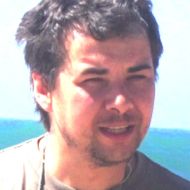The last decade is marked by an increased interest in studying the possibility of direct communication between the brain and external devices, including the brain of another person. The most accessible type of brain-computer interfaces uses multi-channel electroencephalographic signals that non-invasively record brain activity. Despite active research in this direction, it has not been possible to achieve natural control of external devices solely on the basis of non-invasively recorded brain signals.
At the same time, animal experiments have shown that using deep electrodes that record the activity of a large number of individual neurons, it is possible to create brain-controlled devices that reproduce natural motor actions, such as capturing and moving objects and walking on two legs. Invasive IMC can decode and schedule movements over time.
Application of such technology to the creation of interfaces on people is limited by high risks of using needle electrodes, arising complications, as well as fouling of needle electrodes with a connective tissue and loss of electrical contact. A reasonable compromise is the use of subdural or epidural nets of electrodes, allowing with a low risk to the health of the user to significantly increase the capacity of the direct communication channel with the brain, and also through electrostimulation to realize somatosensory feedback.
The main goal of the Laboratory is the development of the information technology of bidirectional communications using the corticographic interface in combination with modern methods for processing multidimensional data and somatosensory feedback through electrostimulation or sensory replacement.
The project is carried out jointly with the clinical medical centre of the Clinical Medical Centre of MGMSU and the Polenov Russian Research Institute of Neurosurgery, who are the clinical bases of this interdisciplinary project.
The development of the interface is based on knowledge of the functional significance of areas of the cerebral cortex. Such information can be obtained using the methods of neurocardication which is another field of research of our laboratory.

